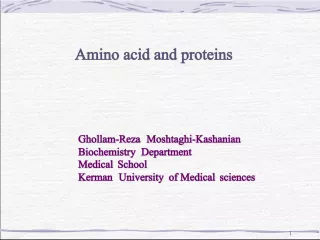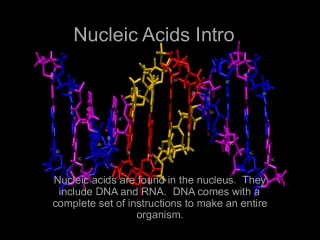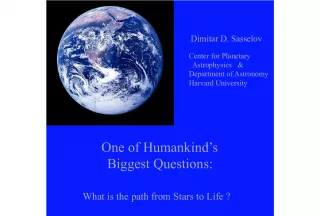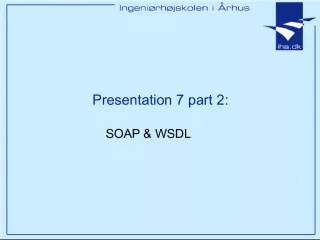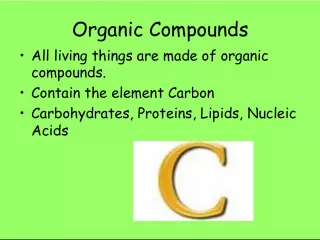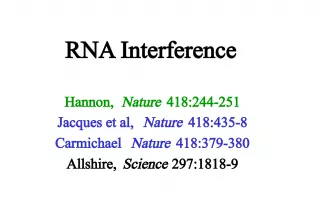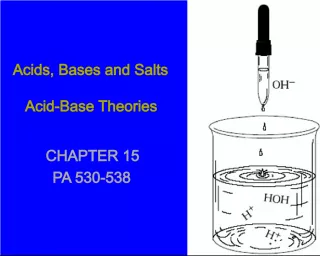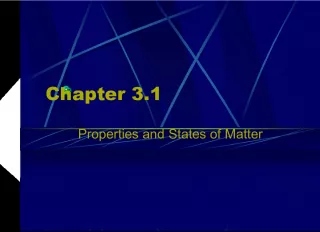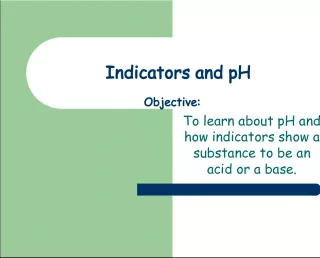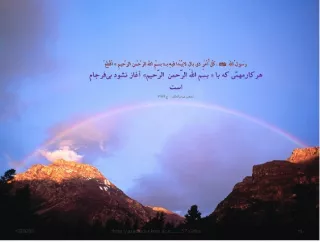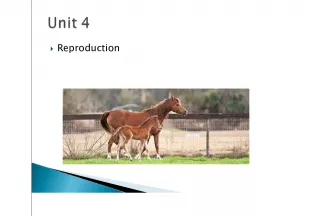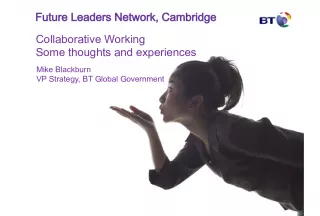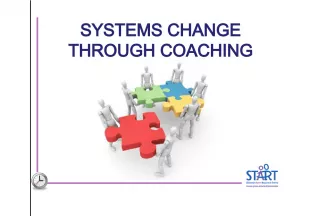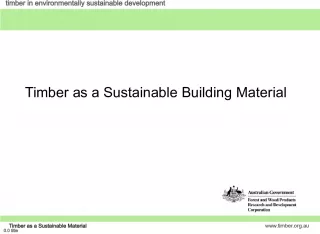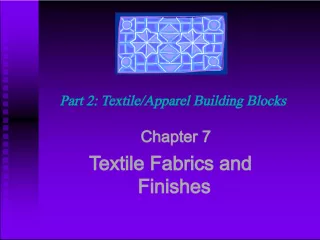Nucleic acids: the building blocks of life


Nucleic acids are a special group of macromolecules found in all living cells. They are very large organic compounds and there are two types: DNA and RNA. The
- Uploaded on | 0 Views
-
 millevestre
millevestre
About Nucleic acids: the building blocks of life
PowerPoint presentation about 'Nucleic acids: the building blocks of life'. This presentation describes the topic on Nucleic acids are a special group of macromolecules found in all living cells. They are very large organic compounds and there are two types: DNA and RNA. The. The key topics included in this slideshow are . Download this presentation absolutely free.
Presentation Transcript
Slide1MACROMOLECULESORGANIC COMPOUNDS
Slide2What is a nucleic acid ? The last type of macromolecules is a special group called nucleic acids . These very large organic compounds are found in all living cells . The two types of nucleic acids are DNA and RNA .
Slide3The building blocks of nucleic acids arenucleotides . Nucleotides have A sugar A phosphate A nitrogen base (there are 5 different bases) What are the building blocks of nucleic acids?
Slide4Structure of Nucleic AcidsThe shape of nuclei acids is very distinctive. A helix is like a spiral.
Slide5Structure of Nucleic Acids DNA is a double helix similar to a spiral staircase
Slide6Structure of Nucleic Acids while RNA is a single strand .
Slide7What are the functions of nucleicacids? These special macromolecules play very important roles in living organisms. DNA carries the hereditary traits of an organism. RNA helps cells make proteins based on the code found in the DNA
Slide8The DNA Molecule DNA stands for Deoxyribonucleic acid There are 4 different nitrogen bases in DNA Adenine (A) Thymine (T) Cytosine (C) Guanine (G)
Slide9The DNA Molecule The nitrogen bases pair up in a specific way Adenine pairs with Thymine (A-T or T-A) Cytosine pairs with Guanine (C-G or G-C) We call these bases that match up with each other complementary
Slide10The DNA Molecule On the back of your notes page write down 9 DNA bases down the left side of your paper: A-, T-, G-, G-, T- etc. You may list them in any order you choose Now go back and write in the complementary base that matches each of your 9 bases
Slide11The DNA Molecule Compare your DNA molecule with the person sitting next to you Now compare your 2 DNA molecules with the students sitting closest to you Did anyone create the same DNA Molecule? Why do you think this is the case?
Slide12Add to your notebook Add the page to your notebook as directed.
